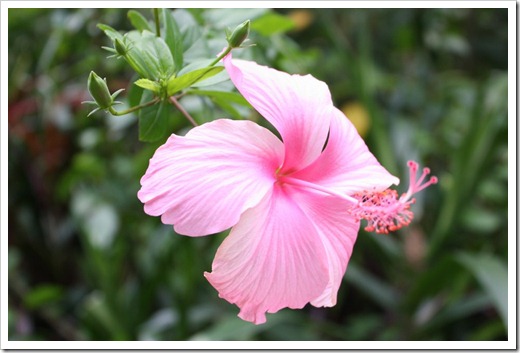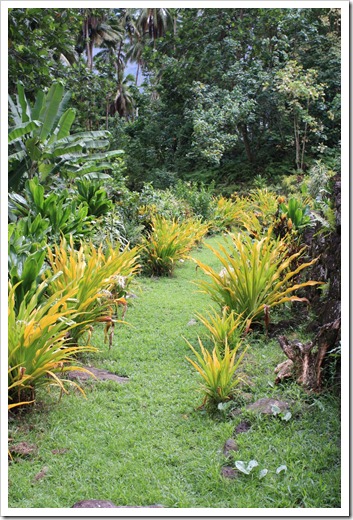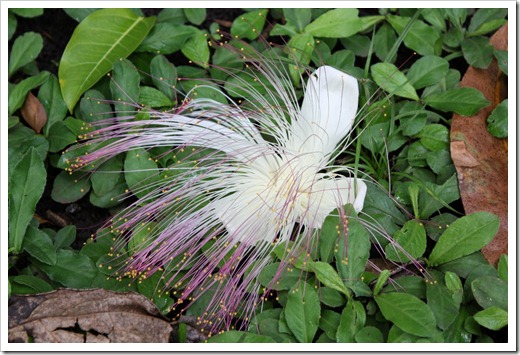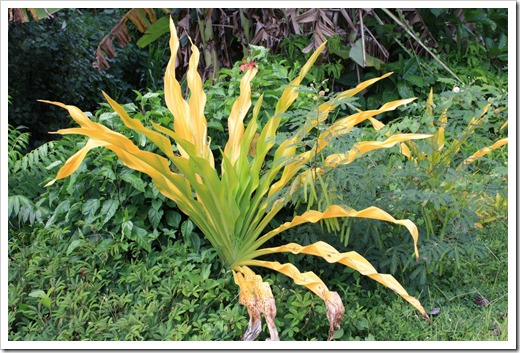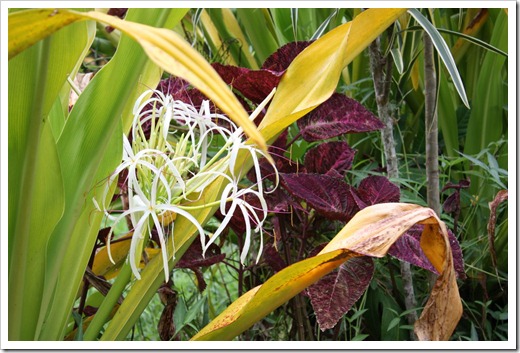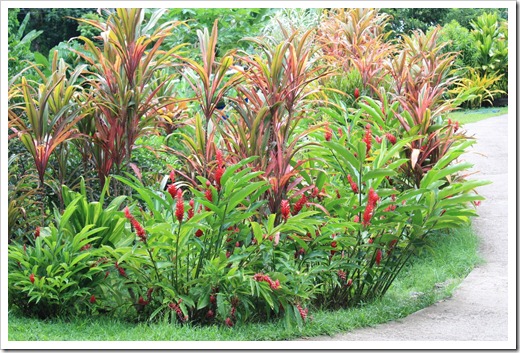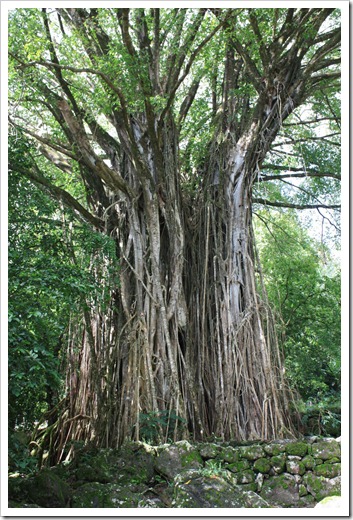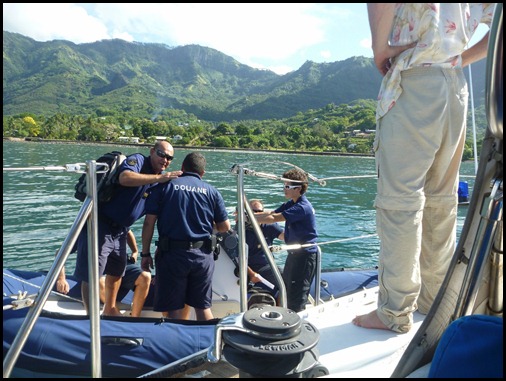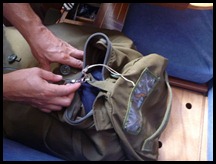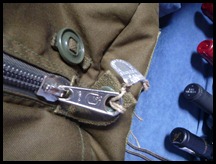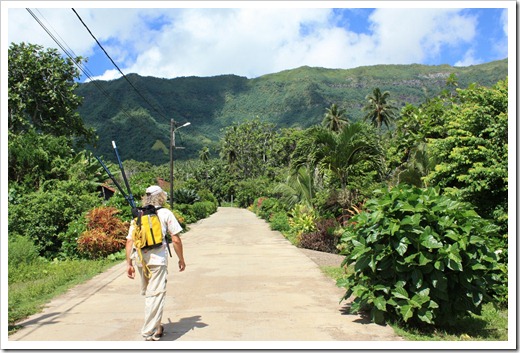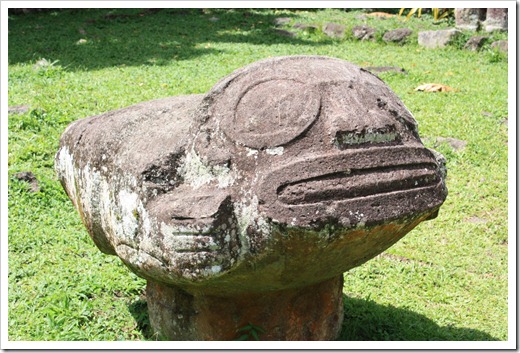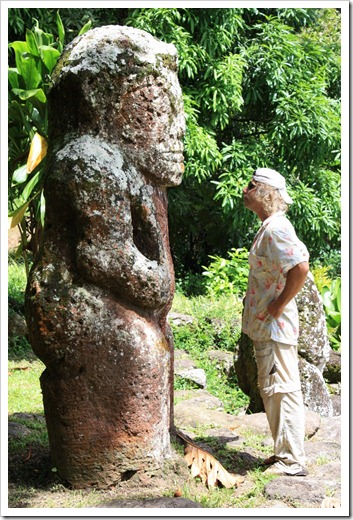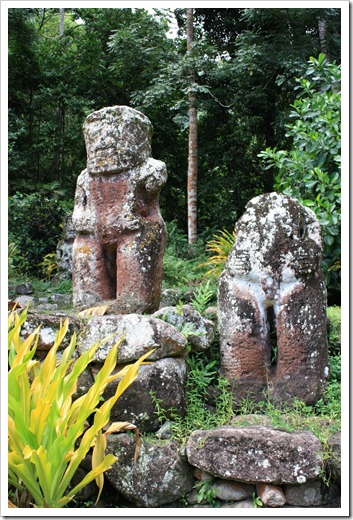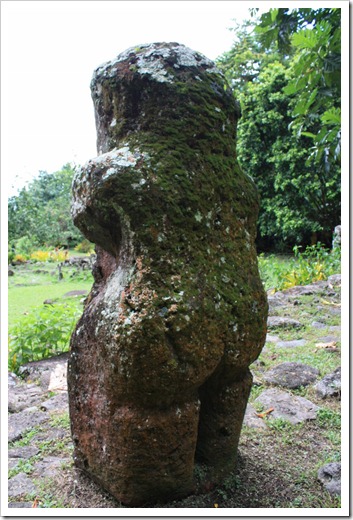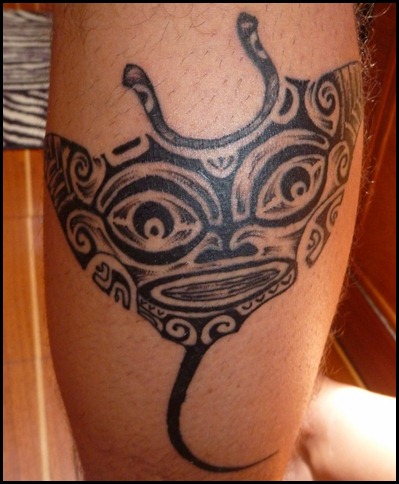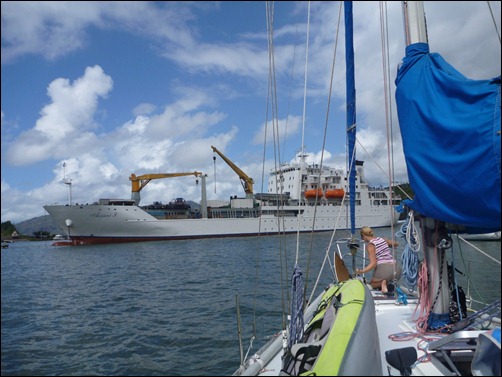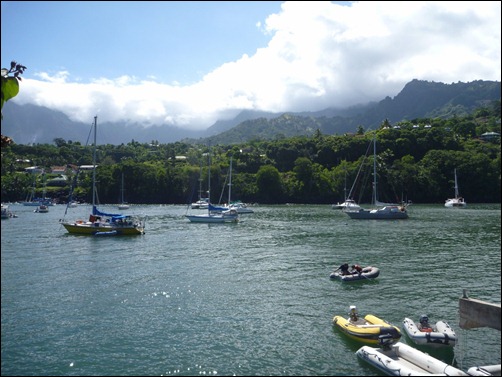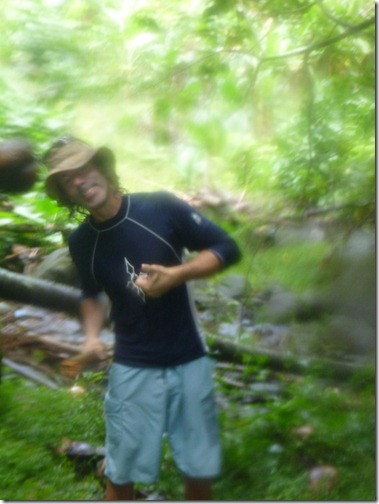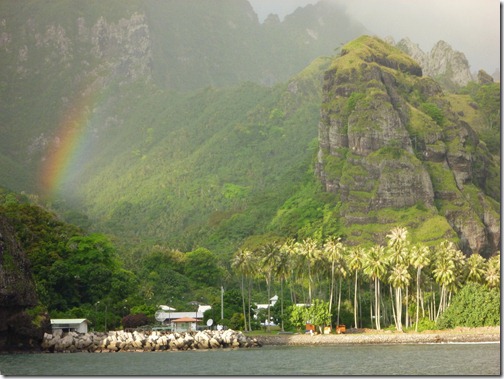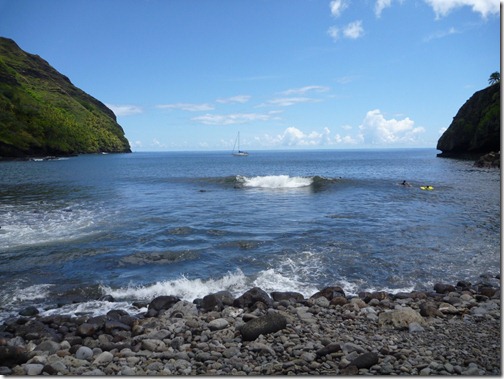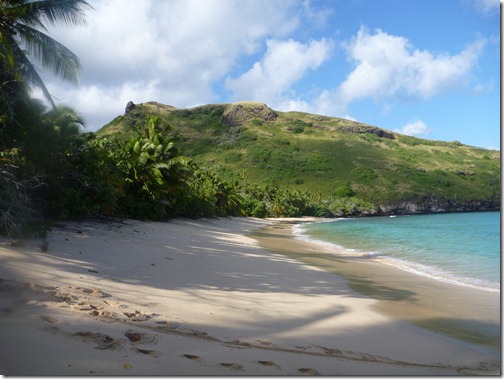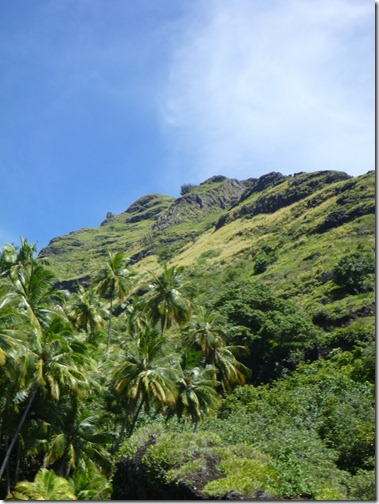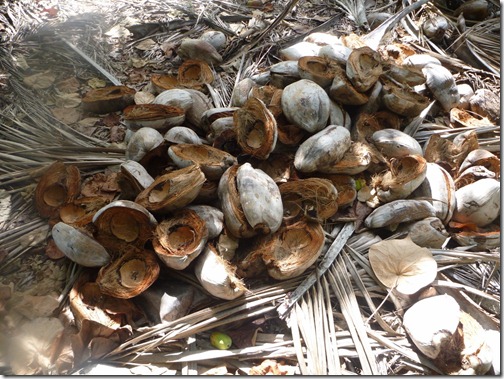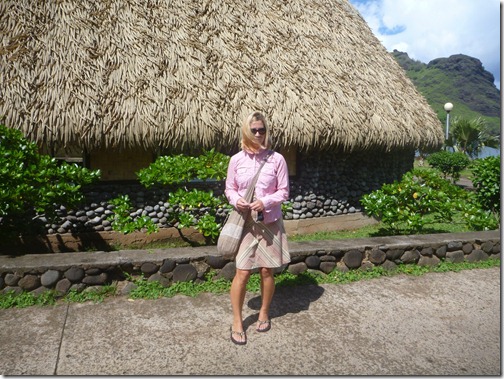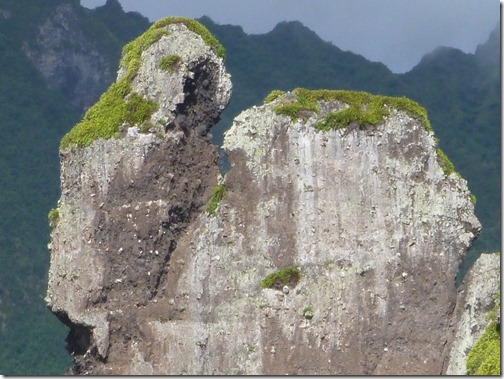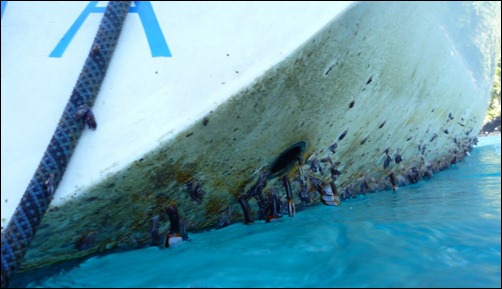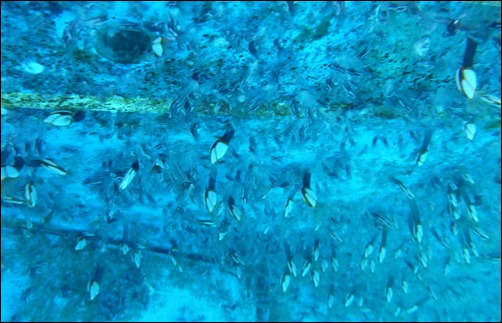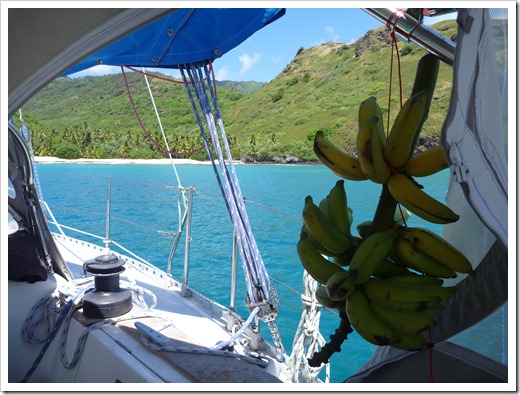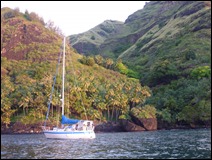Customs visits Estrellita in paradise
 Customs made the rounds at the anchorage of Taiohae on Nuku Hiva and we were vessel number one. They were mainly concerned with alcohol, pets, drugs, plants,firearms and tobacco. We only had alcohol and we had declared it on our form when we cleared into the country and so it was an inconvenient but not particularly stressful experience carried out by a group of nice agents.
Customs made the rounds at the anchorage of Taiohae on Nuku Hiva and we were vessel number one. They were mainly concerned with alcohol, pets, drugs, plants,firearms and tobacco. We only had alcohol and we had declared it on our form when we cleared into the country and so it was an inconvenient but not particularly stressful experience carried out by a group of nice agents.
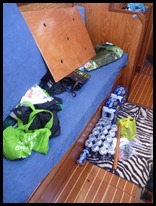 They dug out every container of booze and put it into piles: a pile of wine, a pile of beer and a pile of alcohol. Then they verified the amounts with our form and told us they would have to seal the extra. After some negotiation, they agreed that we could use one of our duffle bags for the seal and they agreed, because we had been honest and exact, to leave us with substantially more unsealed booze than is allotted. They sealed 20 bottles of wine in the duffle.They left us with all of our beer, all of our liquor, 8 bottles of wine and a big mess to clean up.
They dug out every container of booze and put it into piles: a pile of wine, a pile of beer and a pile of alcohol. Then they verified the amounts with our form and told us they would have to seal the extra. After some negotiation, they agreed that we could use one of our duffle bags for the seal and they agreed, because we had been honest and exact, to leave us with substantially more unsealed booze than is allotted. They sealed 20 bottles of wine in the duffle.They left us with all of our beer, all of our liquor, 8 bottles of wine and a big mess to clean up.
We arrived in French Polynesia with more than the allotted amount of booze, knowing that they could choose to seal the amount in excess. It is also possible to pay duty on it but we were quoted 3500CFP (about 40USD/bottle) for wine and so declined. If they board us again and the seal is broken, or presumably if there are fewer than 20 bottles in the duffle, we will have “a big problem”. Otherwise, no harm, no foul.
Logbook: Puamau
We stopped at two bays on the North side of Hiva Oa. We spent just one night at the beautiful Hanatekuua. This is a place to return to for certain if we are ever back in these islands. A pod? flock? of manta rays were feeding in the bay and we jumped in the kayak with the one snorkel mask we could grab quickly and took turns paddling into position and plunking our head underwater to watch the rays underwater. Beautiful. One had a wing span half as big as our kayak and their gaping, scoop-like white mouths glowed blue-white underwater.
We had a pressing appointment with some spare part for our furler arriving in Nuku Hiva and so we left the next morning for a day hook at Puamau – an archeological site I was hot to visit. Let’s just say that landing our kayak was one of the more dangerous things we’ve done in the last few months and that includes an ocean passage. We ended up avoiding the concrete landing with its 6’ surge and surfed the kayak through breaking waves onto the sand beach. Then, after we hiked to the site we portaged the kayak a half mile to the concrete landing because we knew we couldn’t get out through the waves – particularly because Carol had a fresh tattoo and was not allowed to swim. We dropped the kayak into the water, Carol jumped in during a high point in the surge and then I held the kayak with a rope for a few more cycles before I was able to jump in on a high point. Carol then paddled like mad while I held on and we escaped the concrete.
Well, it was worth it. Here is what we saw at Puamau:
Carol’s Marquesan tattoo
We went to Vaitahu specifically to get a tattoo for Carol. Fati (a.k.a. Felix) is a renown tattoo artist in the Marquesas who essentially is behind the renaissance of traditional tattooing on these islands. Apparently sometimes he will tattoo you right when you arrive, sometimes you wait a few days, sometimes he decides you are a pain and he sends you away. We didn’t know that and just showed up. Right in front of us, he sketched out a design and we loved it and Carol said “yes please” and it was done right there, right then. Cost was 15000CFP or about $175USD.
You might remember that Carol was tagged by a sting ray in Long Beach, California and he chose to get a manta ray on the leg that he was stung. We took some great video of that experience and someday when we have higher quality internet it is in the pile of videos I’ll upload. For now, here it is still fresh and healing:
Tomorrow there is a post about Puamau, an archeological site, and notice how this mouth looks like the mouth on the horizontal tiki.
Logbook: Atuona
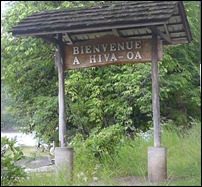 The Aranui is the huge ship pictured in front of our boat and I think it is stalking us. It keeps arriving in harbors after we’ve anchored, sometimes dropping its enormous anchor and chain in the middle of the night scaring us crapless out of bed to find out what monstrosity is making that racket. It is the lifeblood of the Marquesas bringing…almost everything to the islands.
The Aranui is the huge ship pictured in front of our boat and I think it is stalking us. It keeps arriving in harbors after we’ve anchored, sometimes dropping its enormous anchor and chain in the middle of the night scaring us crapless out of bed to find out what monstrosity is making that racket. It is the lifeblood of the Marquesas bringing…almost everything to the islands.
Atuona is a cute town with a crowded anchorage – crowded because it is a place where you can check in. There is a dinghy dock of sorts and an outdoor shower with unlimited slightly cold water (truly wonderful) right by the dock.
The landscape is still dramatic even though the anchorage is a bit chaotic and the town is a 2k walk on a road where everyone seems to stop to pick up people. We walked all of the way only once and the other times were picked up by drivers and given a ride even though we didn’t actively hitchhike.
We arrived in Atuona with four goals: clear into the country, get some local currency, and to leave with clean laundry and a big bag of baguettes, pain chocolat and croissants. We were foiled on the pain chocolat front – none available – but we left with the rest of the baked goods and all of the other errands.
The check in process was painless. We had an agent because we didn’t want to go through the process of paying (easy) and retrieving (less easy) the bond that you have to pay. We filled out a single form, no cash exchanged hands, and we left with a single piece of paper. MUCH less expensive than Mexico.
Logbook: Hanamoenoa & Vaitahu
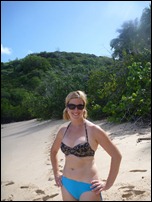 The island of Tahuata has a number of gorgeous anchorages. We only visited two: one for the natural beauty and one for a tattoo.
The island of Tahuata has a number of gorgeous anchorages. We only visited two: one for the natural beauty and one for a tattoo.Hanamoena looks like a movie set. Or rather, movie sets try to look like Hanamoena. Beautiful sand beach, a backdrop of cliffs, waves crashing on shore and on the black volcanic rocks on either side of the bay, lush green tropical forest with coconut trees wafting in the breeze.
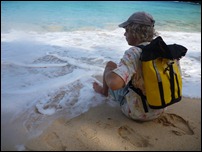 We went into the forest and collected a bag of limes, some grapefruit and hacked open our first coconut. We spent a morning snorkeling on the south side of the bay from our kayak.
We went into the forest and collected a bag of limes, some grapefruit and hacked open our first coconut. We spent a morning snorkeling on the south side of the bay from our kayak.Vaitahu on the other hand is quite a different place. The bay is less interesting but the town was cute and most importantly had the famous tattooist – Fati – known for his Marquesan designs, his inspiration and creativity, and the fact that he turns some people away because he doesn’t like their vibe which, of course, makes you feel special when he decides to tattoo you.
Carol got a tattoo but I’m going to show you that in a different post…sorry.


While in Vaitahu we visited the inside of the church which is made from a lot of local wood and is quite beautiful inside. The stones are discarded ballast from old trading ships and the Mary-Jesus combo inside is refreshingly brown.
I also love how everything – churches, houses - is open to the outside. There is a roof for the rain, and walls, but not all of the walls are designed to go all of the way to the roof.
Logbook: Fatu Hiva
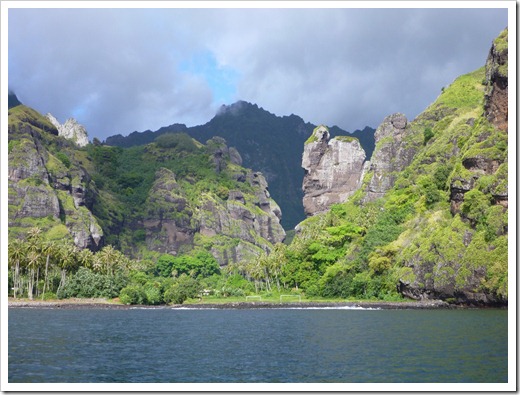
The image of Fatu Hiva is burned into the collective consciousness of cruisers. It is a dream landfall of many and I’ve seen the image in books and on blogs. I have to say that it is as beautiful in person as it is in images. Certainly it is different. It is smaller than I imagined and although I knew from the guidebooks that there was a small town I hadn’t thought of the town when dreaming. It is even more verdant than the pictures and pictures cannot convey the smell of rain, sea and flowers that permeate the anchorage.
We were there at the change of seasons and rain showers swept over the mountains into the anchorage several times a day rinsing the boat and killing the heat.
We hiked to a waterfall, after finding the trail, past a pack of dogs and through a rainstorm to arrive at the waterfall completely soaked. Awesome. During our hike both of our pairs of flip flops were stolen from our kayak which, considering we escaped Mexico unburgled, only to experience theft in French Polynesia was odd and not awesome. A woman we spoke with said the kids steal and she was surprised our kayak paddle was still there. *sigh*
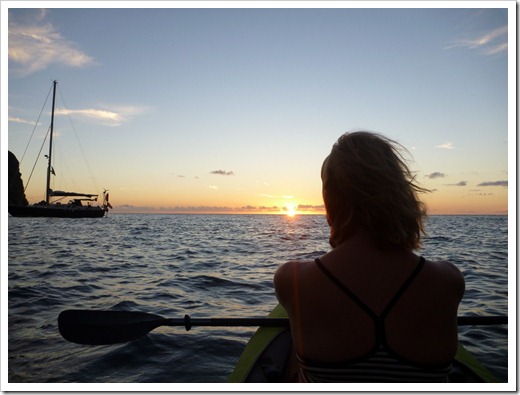
We spent a few days lounging around in the anchorage absorbing the scenery. The ARC World Rally of boats was in the area and they drifted in and out of the anchorage at their faster pace while we were there.
We went out in the kayak and slowly paddled around during several sunsets.
Gooseneck barnacles
This is what our freshly waxed hull looked like upon arrival in the Marquesas:
Gooseneck barnacles grew on our hull during our passage, making us steadily slower in the water as the weeks went by. We had been given the tip to trail a line from the nose of the boat on each side every few days and that reduced the number of barnacles that we had from the nose to somewhere amidships where the rope stopped making contact with our hull. We also “flossed” our hull by taking a line from both sides of the bow and see-sawing it back and forth until we reached the keel and then trying to get it between the keel and the sail drive and the sail drive and the rudder. Fairly easy to do at anchor, very difficult to do underway.
 The good news is that they die on their own when you arrive in port. For whatever reason, they are a bluewater only phenomenon.
The good news is that they die on their own when you arrive in port. For whatever reason, they are a bluewater only phenomenon.
We cleaned the ones on the waterline as soon as we made landfall (ok, the next day) to avoid the white circles they leave when they fall off. But otherwise, we had to dive down and leverage off a few normal barnacles and we had some slime to rub off, but for the most part the hull was clean all on its own a few days after arrival. Impressively weird.
Fun fact: the word for the “normal” barnacles in French translate to “Chinese hats”.
A Month of Comments
Our internet is too scarce to reply to comments directly so I decided to go through the comments while offline and write a response post.
Is the grass greener on the other side? Literally, yes. The Marquesas are much greener than Baja California Mexico although we expect the Tuamotus to be much less green. Figuratively, it is too early to tell. Right now we are in the honeymoon stage of arriving in a country. Everything is new and shiny and fantastic. It will take a while for the warts to show and for us to form a more balanced opinion.
Do you pole out your tack or clew on the asymm spinnaker? We pole out the clew. Our tack is on an ATN Tacker around the furler. I am curious to know how poling out the tack would work?
So you're saying bluewater sailing is like blues dancing? I *hope* there is less danger of chafe in blues dancing and our boat has more cheese (but it is real cheese).
RE: Naked yet? A picture would help. Oh it definitely would but you don’t get one ;)
3 people on a passage gives you so much more sleep. Yes, but then you have to wear clothes!
How are we still posting? We use our SSB radio with a pactor modem to send text emails. I configured blogger to allow email-to-blog and so I can send an email to blogger which ends up being posted on the blog. We were waaaay out of wifi/3G range. Also, remember that I am always writing posts and when I get into wifi range I usually upload a bunch of posts with pictures. BUT rather than have the posts all go up at once I schedule them for one a day or one every other day. This means that the posts are likely to be weeks behind where we actually are right now. If you want to know where we are right now, see the note on our lat-long below.
Wedges. To everyone who suggested various ways of wedging yourself so you can sleep during the roll. Thank you. I plan on trying them out in the future. We used pillows semi-successfully.
Boobies. We did eventually lose the boobies. I can’t remember how far offshore we were but they stopped trying to land on the boat. We still saw birds but these were seabirds that weren’t interested in our boat although they would occasionally check out our lures.
Can you put your location (lat-long) on your posts? We’re updating our position as we move on our map (check on the blog on the upper right for “where are we now”. Or you can always go to winlink.org or shiptrak.org directly and look us up with the callsign VA7LIV.
We are leaving the land of wifi again but we’ll get your comments on our next internet binge. Thanks for the interaction!
Dripping with fruit
We have a banana stalk hanging from our boat. TROPICAL BABY!
So far we haven’t traded for fruit. We’ve either had it given to us by other cruisers or we’ve been in uninhabited places and picked what we could eat. 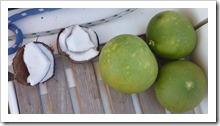
When we first arrived another boat that was loaded down with fruit after visiting a remote bay gave us 6 pamplemousse, a guava, a papaya, a stalk of bananas and a grocery bag of limes. I’ve been using our lime press from Mexico to squeeze limes by the half dozen for drinks.
We’ve grabbed our own coconuts and our own polynesian grapefruit. Husking and cracking a coconut is a skill we are still acquiring but with enough brute force we had a tasty snack. In one bay we found a bunch of untended lime trees and restocked.
French Polynesia
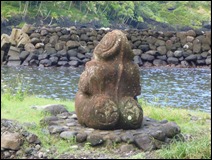 At anchor you can smell wet loamy earth and the perfume of flowers. You hear the wind in the palm trees, the roosters crowing at all hours and the roar of ocean swell on rocky shoreline. Everywhere you look you see the brown-green of earth, the white-and-blue of the sky or the blue-green of the tropical water.
At anchor you can smell wet loamy earth and the perfume of flowers. You hear the wind in the palm trees, the roosters crowing at all hours and the roar of ocean swell on rocky shoreline. Everywhere you look you see the brown-green of earth, the white-and-blue of the sky or the blue-green of the tropical water.
The heat sears us from the sky, reflects off of the water for a milder but no less burning angle, radiates from all flat surfaces and surrounds us n the damp air when the wind stops. We spend our days wet: wet from sweat, wet from swimming and snorkeling, wet from the fast, intense rain showers that sweep overhead several times a day. After 4 winters in British Columbia, we smile while we bake and grin while we sweat.
We’ve settled into a routine of a spurt of activity in the morning, followed by a long period of avoiding movement in the afternoon. We sit in the cockpit sweating, moving our panels to reduce the sun, and letting our eyes feast on the scenery. We swim off of the back of the boat or use our halyards to do rope swings.
As the sun loses its fierce heat, or as the clouds roll in, we do boat tasks or life tasks. In the evening we watch the sun set, listen to the radio nets as we sip our cold drinks and start deciding whether we can stand the heat of cooking. As night falls the heat subsides to a comfortable level and we watch a bit of TV or read or watch the stars and then retreat to our cool v-berth for sleep.
Landfall
We are safely at anchor after 26 days and 19 hours. We spent 643 hours under sail and 6.3 hours under motor (3 hours getting out of the Cabo wind shadow, .6 avoiding electrical activity in squalls, 2.3 while becalmed only 50 miles from landfall and .4 into the bay to anchor).
We broke the lower bearing in our furler and fixed it temporarily with rubber hose from our sun shower. We chafed through one bit of old rope we used as a retention line, just in case, on our windvane rudder. We lost the sunbrella stitching on the foot of our jib and we changed headsails on the furler at sea to our genoa. Other than general wear and tear, no other failures.
We used 6.2 engine hours for battery charging and while in light air we hauled our Honda 2000 generator on deck twice and charged the batteries that way. All other energy was provided by our solar panels.
We still have a good range of produce (oranges, lemons, limes, apples, leeks, carrots, onions, sweet potatoes and potatoes) but no fresh meat, only long life meats (e.g., salami and bacon) and canned meat. During the passage, because we had so much light air, we baked pies (both savory - salmon/potato - and sweet - fresh apple and canned blueberry), lasagna, brownies, coffee cake, and one round of fresh bread.
Our bodies are tired, sun touched and sweaty but other than a minor thumb strain for Livia and a bit of a sore back for Carol, we are good to go.
Time to clean up the boat, rest and then start exploring our new backyard.
ITCZ Strategy
While doing our research for this passage it seemed that there were two main approaches:
1) Sail the rhumb line
2) Sail more Westerly than the rhumb, taking advantage of the NE trades, at some point between 125W and 130W cross the ITCZ by heading directly South until we reached the SE trades and then point our bow at the Marquesas.
As major ocean crossing newbies, we took the expert advice and opted for #2. All of the while in the back of my head was a disturbing bit that I read from Don Anderson in which he said that while he advocates #2, and that while having a strategy is good, that crossing the ITCZ is a bit of a crapshoot for two main reasons:
1) The ITCZ can move hundreds of miles in a 24 hour period and often does.
2) No one can predict its movements.
These are two very good reasons why two boats leaving within hours of each other (but traveling at different speeds) can have very different passages. The ITCZ is a slippery bugger, and as we can attest, it can bloat up like a puffer fisher and become a big diffuse wind and convection blob without a coherent zone as its namesake suggests.
How can we attest that? Well, we kept feeling like we were in and out of a watered down ITCZ. We had sudden increases in heat, humidity, and convection and light flukey wind that came and went - for 10 days and many miles. We had already noticed that on our weather downloads the ITCZ was being represented in multiple sections rather than one continuous line and those sections were separated by hundreds of miles, both N and S of the Equator. This made us suspicious enough to read the footnotes on the text weather forecast which told us that "the convection activity was not sufficiently concentrated to make a reliable statement about the location of the ITCZ".
Woah. Not only does it move, and we can't predict its movements, sometimes we don't even know where it is RIGHT NOW.
We left very early in the 2012 season and perhaps that influenced our experience. One weather guy backcasted* that "sometimes the ITCZ does this at the vernal equinox". Or maybe it had nothing to do with time of year and was just one of the many weird things the ITCZ can do at any point.
"She moves, in mysterious ways." - U2
*Backcasting, while interesting, has a definite hindsight is 20-20 feel about it.

